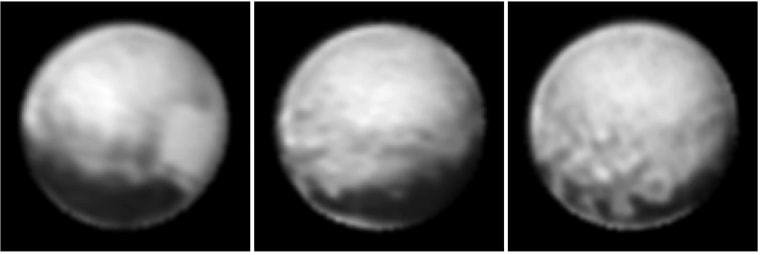As NASA's New Horizons spacecraft enters the home stretch for its historic July 14 flyby past Pluto, the mission's managers say the glitch that briefly knocked the spacecraft offline over the Fourth of July weekend will never happen again.
If anything goes wrong between now and July 14, the probe's computer is programmed to reboot itself and pick up where it left off.
"Just like resetting your computer at home," Glen Fountain, the $728 million mission's project manager at Johns Hopkins University Applied Physics Laboratory, told reporters during a Monday teleconference.
Fountain and New Horizons' principal investigator, Alan Stern of the Southwest Research Institute, explained why the piano-sized spacecraft hit a "speed bump" on Saturday.
The fault occurred when New Horizons' primary computer was compressing previously acquired image data for more efficient storage on a recorder, at the same time that it was loading the detailed command sequence for the flyby.
"The computer was trying to do these two things at the same time, and the two were more than the processor could handle at one time, so the processor said, 'I'm overloaded,'" Fountain said. That triggered protective software that shut down communications with Earth, switched operations from the primary to the backup computer, and then re-established communications about an hour later in safe mode.
Never again
Fountain said that it only took about 15 minutes to diagnose the problem once contact was re-established. He said the image data that was being compressed over the weekend was richer than the "test pattern" data that was used for earlier simulations — and that probably contributed to the computer overload.
"These two events will not happen concurrently again," he said.
The process of restoring normal operations and getting back to gathering scientific observations has taken a couple of days, and there are a couple of reasons for that.
Firstly, the spacecraft is nearly 3 billion miles (5 billion kilometers) away. That means it takes 4.5 hours for signals to be sent to the spacecraft at the speed of light, and another 4.5 hours for the spacecraft to send back a response. Secondly, Stern said the team decided to concentrate on spacecraft recovery rather than trying to make the observations that had been scheduled for Sunday and Monday — in his words, to "focus on the cake and not worry too much about the icing."
About 30 observations went by the wayside, out of a total of 496 that had been scheduled to take place starting Saturday and going all the way out past the flyby. None of the mission's high-priority observations will be lost, Stern said.
Stern said the team had weathered nine safe-mode episodes during the nine years since New Horizons' launch, "so we've been in a familiar circumstance a number of times before."
"I probably should tell you I'm more nervous, but I'm not," he said.
Encounter mode
New Horizons is currently less than 5.6 million miles (9 million kilometers) from Pluto and closing in at 30,000 mph (50,000 kilometers per hour). On Tuesday, the spacecraft is scheduled to begin a pre-programmed observational campaign for the encounter that will last until two days after the flyby.
During the time that New Horizons is in encounter mode, it won't go into safe mode if the computer encounters a problem. Instead, it will reboot and return to the pre-programmed time line. If the computer fails to execute a high-priority observational task due to a glitch, it will try again. "We make sure that if one trips, we have a backup," Stern said.
Stern noted that the July 14 flyby will take place on the 50th anniversary of the Mariner 4 probe's first successful flyby of Mars. "We will collect approximately 5,000 times as much data as Mariner 4, and for a first flyby reconnaissance, we're gonna knock your socks off," he promised.

Most of the data will be stored in the spacecraft's 128 gigabits of flash memory until after the encounter, and then sent back at an average rate of 2,000 bits per second. It'll take 16 months to transmit everything, Stern said.
"You've got to really be into delayed gratification if you want to be on this mission," he said.
After the teleconference, NASA released new pictures of Pluto that were based on data sent back between July 1 and 3, just before the glitch hit. The images show a swath of dark terrain around Pluto's midsection, breaking into what appears to be a series of regularly spaced dark spots.
"This object is unlike any other that we have observed," Stern said. "While Pluto has some similarities to Triton [Neptune's largest moon], it is not Triton. It looks like it has a much more complicated story to tell us."
